Viewing/Editing an Asset Introduction
It's possible that information concerning Assets may need to be viewed or even edited at some point and this can be done simply by clicking the "Asset Search" button.
1. Once clicked, the Asset Search screen appears. This is where the details of the search are specified to make sure the correct Asset(s) is found. The only field information that is mandatory is the Client but by entering the other details, a more precise search can be conducted. The Buildings, Building Format, Equipment Types and Manufacturers fields are all separate menus where one or more items can be ticked and the Status field is where it is possible to view Assets by their status (see below). It is also possible to bring back a list of Assets using Warranty, whether they are managed or not and whether they are operational or not. It is also possible to search by a specific Asset Number. Once the required details have been entered, click "OK" to perform the search.
Note: If a building is no longer managed any assets for that building will not be returned unless the "Not Managed" box at the bottom of the Asset Search screen is ticked (i.e if the user requires to see all assets including assets for not managed buildings then this box will need to be ticked, if the user is not interested in seeing any assets at building that are no longer managed then leaving the box unticked will not show them in the list).
Note: If a building is no longer managed any assets for that building will not be returned unless the "Not Managed" box at the bottom of the Asset Search screen is ticked (i.e if the user requires to see all assets including assets for not managed buildings then this box will need to be ticked, if the user is not interested in seeing any assets at building that are no longer managed then leaving the box unticked will not show them in the list).
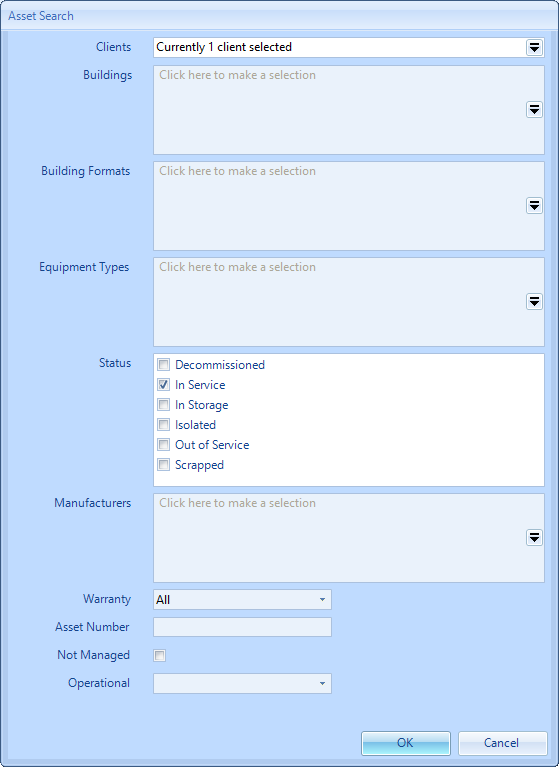
2. A list of all the Assets, as defined by the search criteria, appears. To view an Asset, double click an item in the list or select an item and click the "Next" button.
3. When viewing an Asset, it is possible to see and edit all the information that was added to the Asset during the creation process. It's also possible to view the history of the selected Asset by going to the "History" tab. In this tab, Users can view three types of history relating to the Asset:
· Location History provides an audit trail of any changes in location, whether that is an area within the Building in which the asset is currently associated or to an alternative Building.
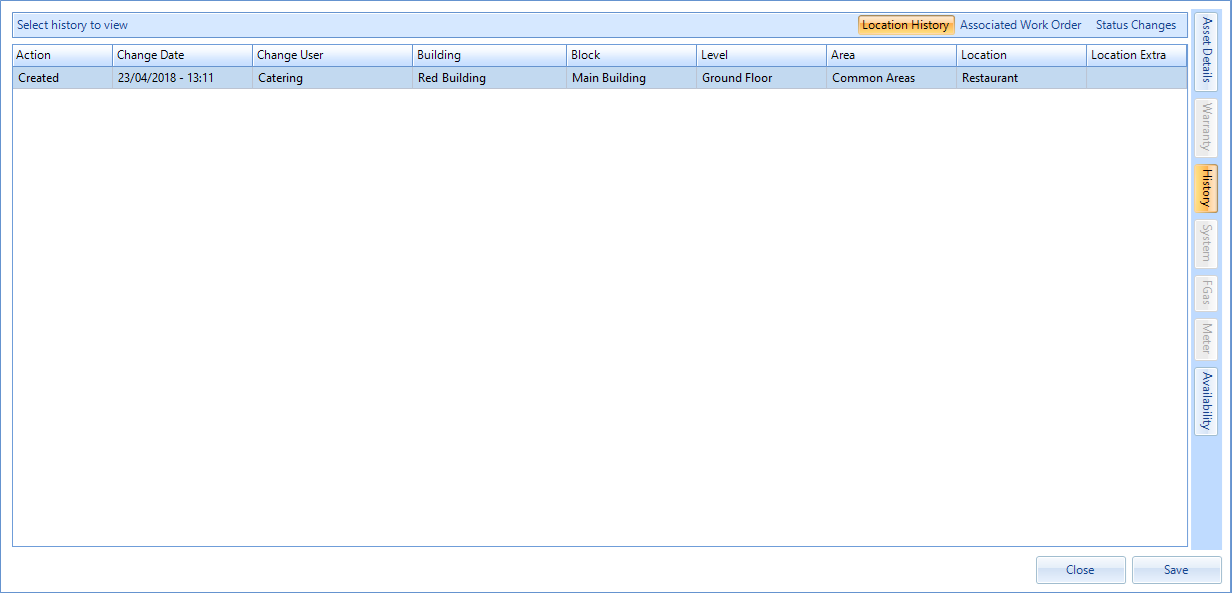
· Associated Work Order History rovides an audit trail of all work orders created which has the asset associated. This shows details of dates, costs & type of fault.
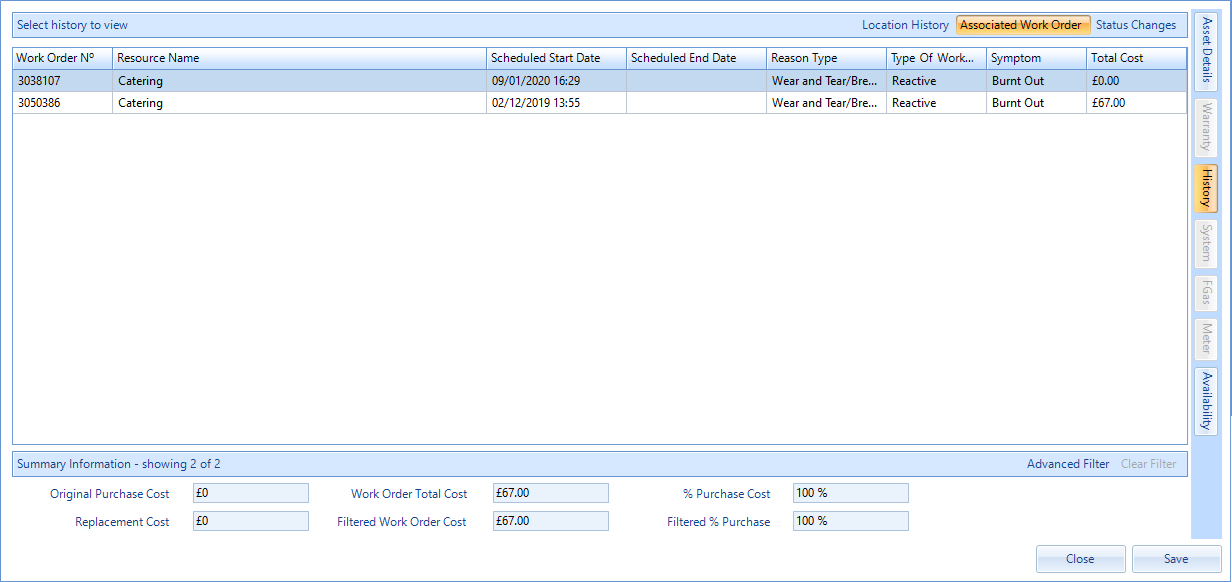
The User is able to filter this list using the "Advanced Filter" option. This provides the option to filter by Start and End Date, Type Of Work Order, Resource and Currency. Clicking "OK" will apply this and filter down the view.
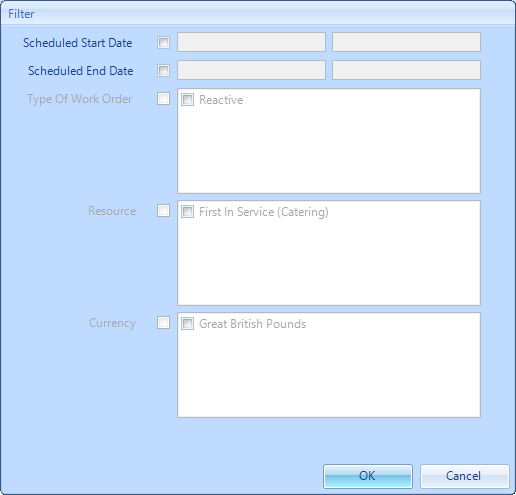
· Status Change History provides an audit trail of any changes in status which the asset has experienced. For example if the asset was moved from in service to out of service.
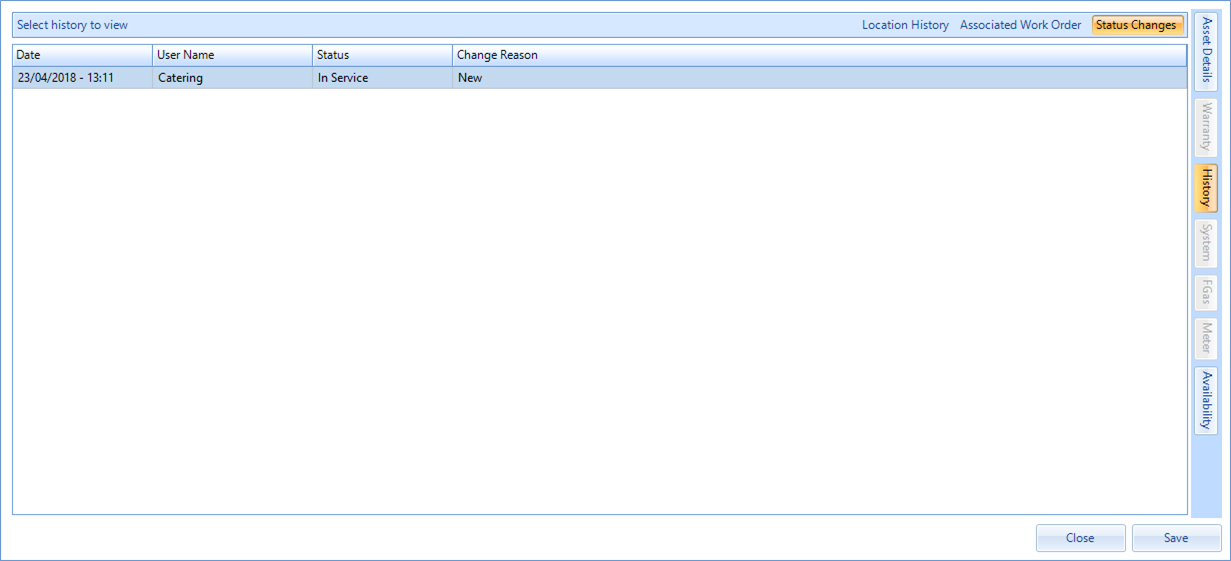
· Location History provides an audit trail of any changes in location, whether that is an area within the Building in which the asset is currently associated or to an alternative Building.

· Associated Work Order History rovides an audit trail of all work orders created which has the asset associated. This shows details of dates, costs & type of fault.

The User is able to filter this list using the "Advanced Filter" option. This provides the option to filter by Start and End Date, Type Of Work Order, Resource and Currency. Clicking "OK" will apply this and filter down the view.

· Status Change History provides an audit trail of any changes in status which the asset has experienced. For example if the asset was moved from in service to out of service.

4. Once any changes have been made, click "Save" to apply them. If the Asset was only being viewed, click "Close".